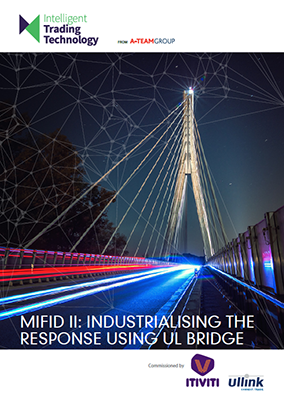
MiFID II: Industrialising the Response Using UL BRIDGE
Many firms within the scope of Markets in Financial Instruments Directive II (MiFID II) struggled to meet the regulation’s deadline of January 3, 2018 and are now waking up to the fact that many of the processes put in place for implementation day are not sustainable.
To achieve and maintain MiFID II compliance over time – effectively, efficiently, and at scale – firms need to industrialise their processes. They need to rework their trading operations and the IT systems that underpin them, otherwise they may be exposed to operational, compliance and reputational risk in the future.
This white paper, sponsored by Itiviti-Ullink, considers how ULLINK’s UL BRIDGE gives firms the agility, scale and reliability they need to centralise and standardise trade data management workflows, including those required for MiFID II. By ensuring consistency of interaction with market participants, trading-related internal systems and databases, and regulatory reporting mechanisms, firms can lower their operational risk. By minimising the cost and risk of making changes required by MiFID II, they can also take a more industrialised approach to compliance.

